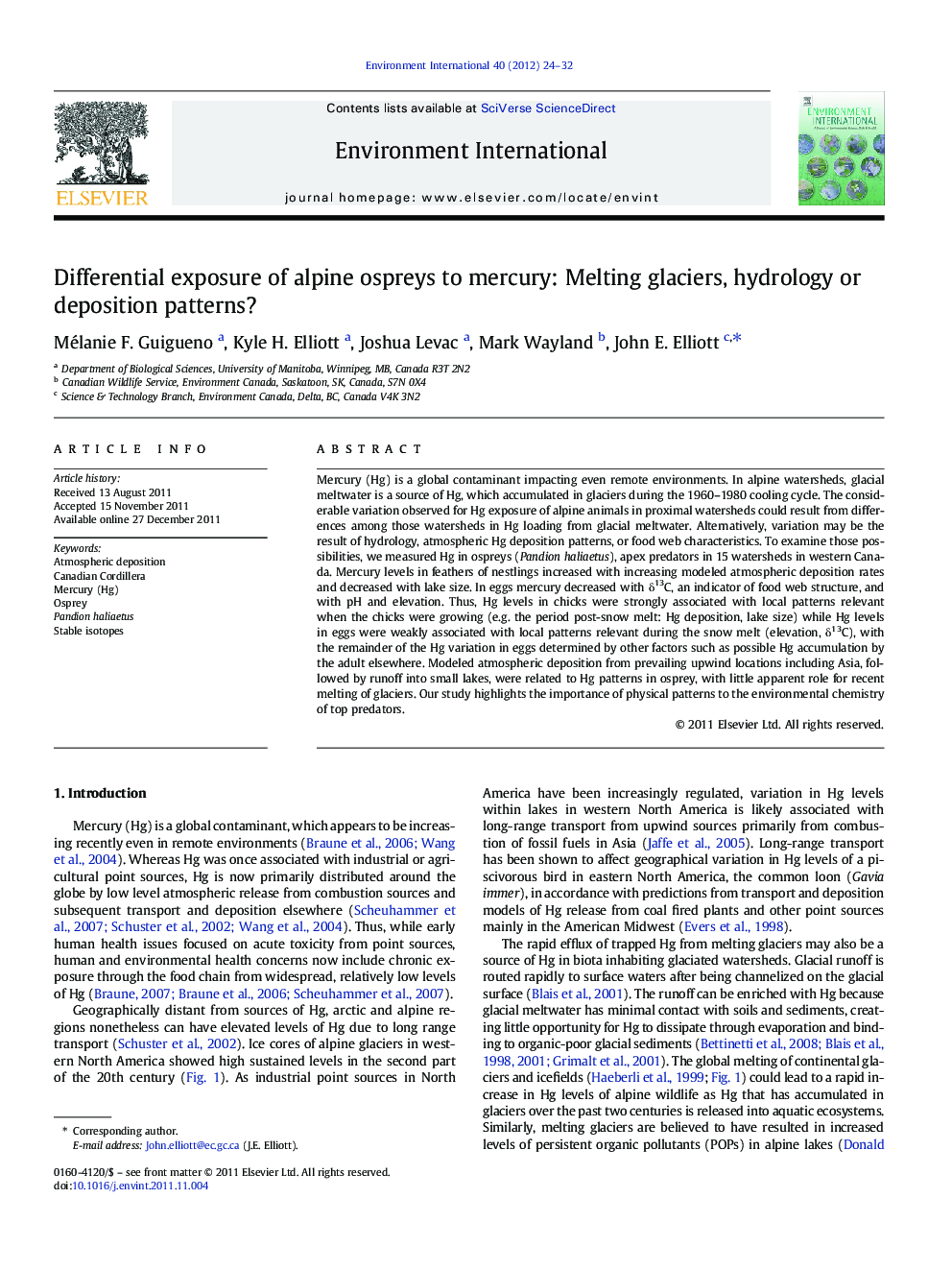| کد مقاله | کد نشریه | سال انتشار | مقاله انگلیسی | نسخه تمام متن |
|---|---|---|---|---|
| 4423096 | 1619087 | 2012 | 9 صفحه PDF | دانلود رایگان |

Mercury (Hg) is a global contaminant impacting even remote environments. In alpine watersheds, glacial meltwater is a source of Hg, which accumulated in glaciers during the 1960–1980 cooling cycle. The considerable variation observed for Hg exposure of alpine animals in proximal watersheds could result from differences among those watersheds in Hg loading from glacial meltwater. Alternatively, variation may be the result of hydrology, atmospheric Hg deposition patterns, or food web characteristics. To examine those possibilities, we measured Hg in ospreys (Pandion haliaetus), apex predators in 15 watersheds in western Canada. Mercury levels in feathers of nestlings increased with increasing modeled atmospheric deposition rates and decreased with lake size. In eggs mercury decreased with δ13C, an indicator of food web structure, and with pH and elevation. Thus, Hg levels in chicks were strongly associated with local patterns relevant when the chicks were growing (e.g. the period post-snow melt: Hg deposition, lake size) while Hg levels in eggs were weakly associated with local patterns relevant during the snow melt (elevation, δ13C), with the remainder of the Hg variation in eggs determined by other factors such as possible Hg accumulation by the adult elsewhere. Modeled atmospheric deposition from prevailing upwind locations including Asia, followed by runoff into small lakes, were related to Hg patterns in osprey, with little apparent role for recent melting of glaciers. Our study highlights the importance of physical patterns to the environmental chemistry of top predators.
► Mercury levels in top alpine predators (ospreys) often vary between nearby nests.
► Reasons include differential hydrology or runoff from glaciers that sequester Hg.
► Instead, atmospheric deposition from Asia directly determined Hg in osprey chicks.
Journal: Environment International - Volume 40, April 2012, Pages 24–32